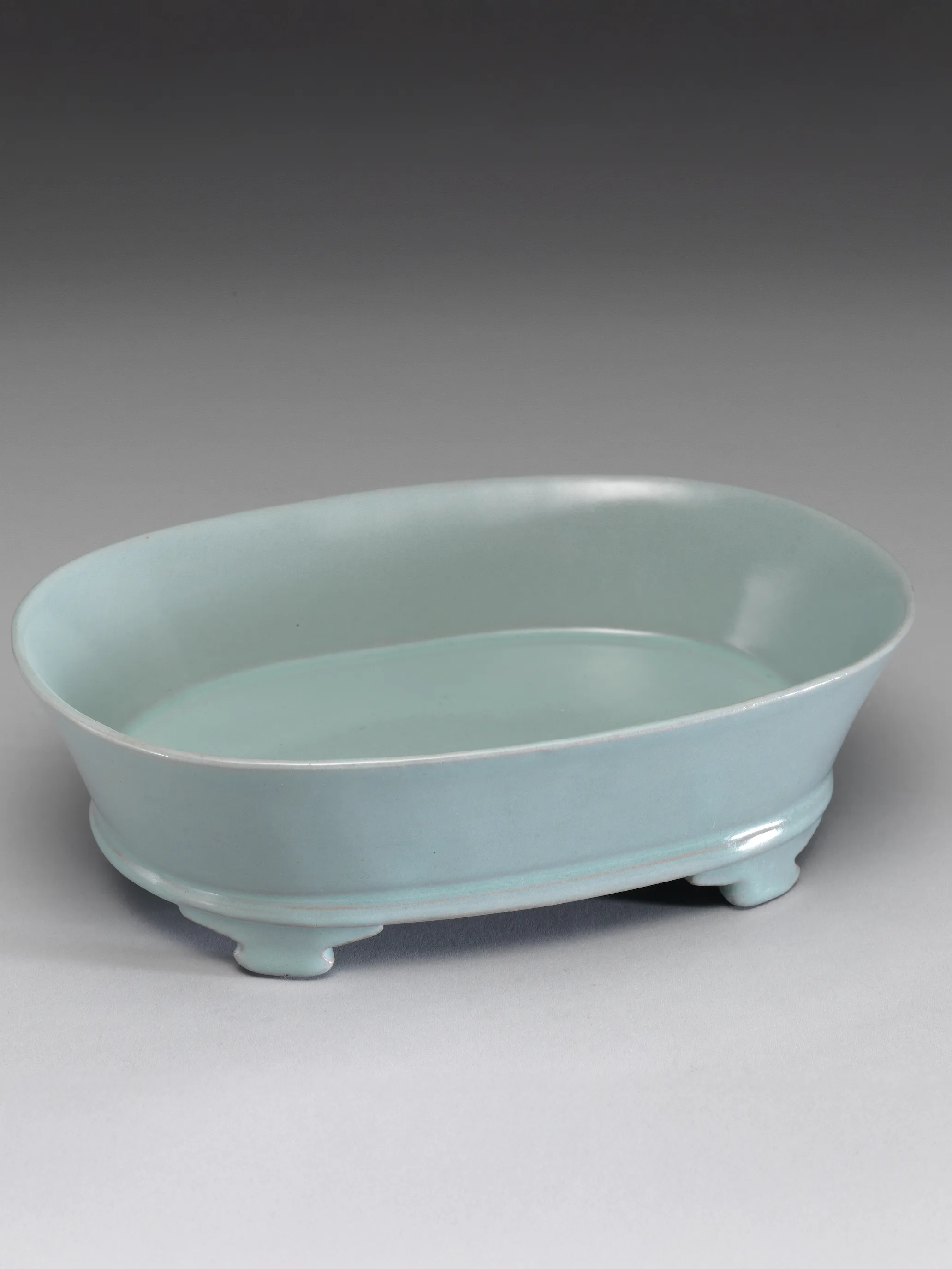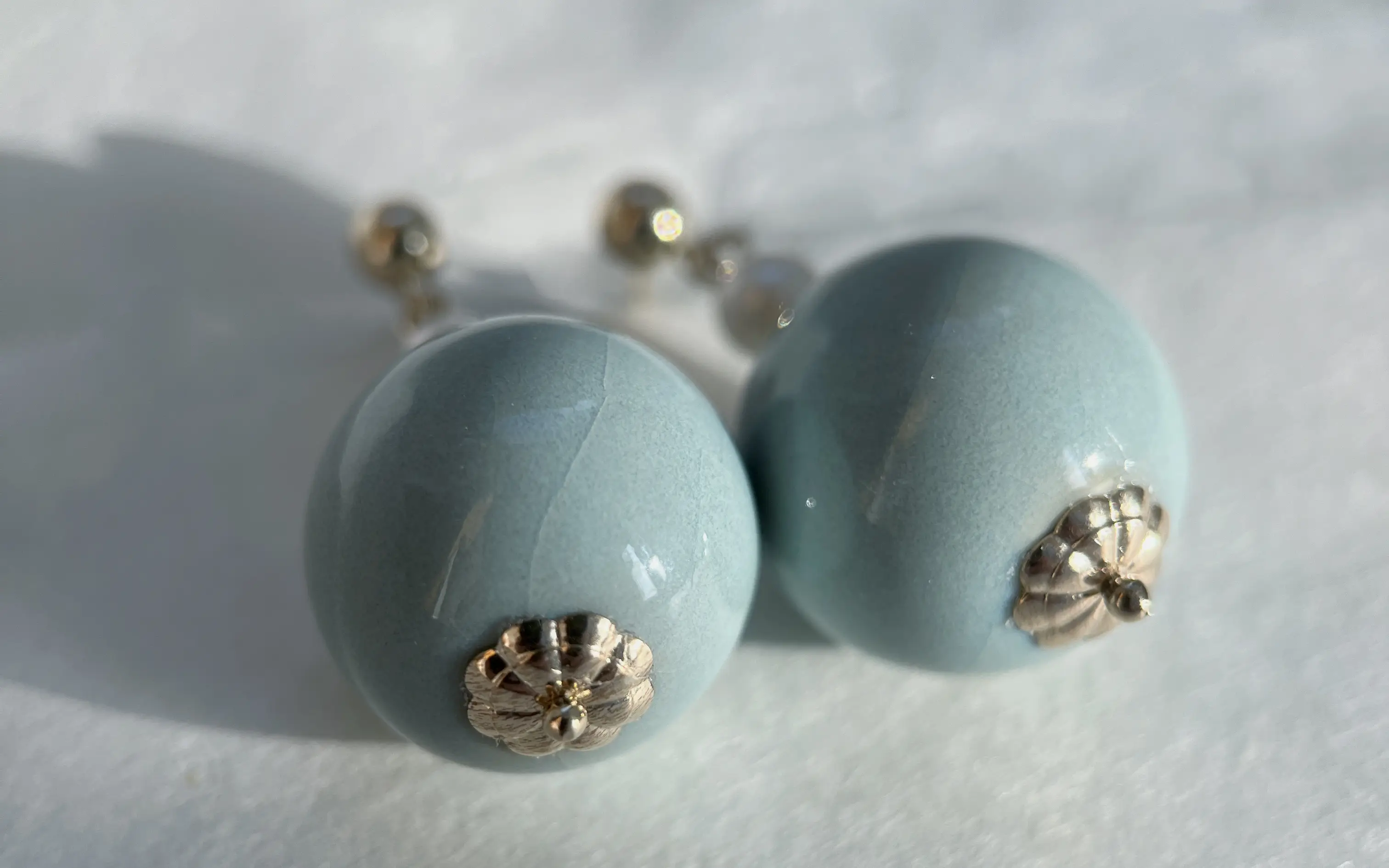Historical Context and Core Features
Ru kiln was one of the Five Great Kilns of the Northern Song dynasty, active primarily in today's Ruzhou, Henan province. Based on historical records and archaeological findings, it was in operation for only about 20 years—roughly from the Yuan You reign (1086) to the early years of Zheng He (around 1106). Among the Five Great Kilns, it had the shortest production span. Because it was made exclusively for the imperial court and produced in extremely limited quantities, fewer than a hundred intact Ru ware pieces have survived. The full technical system was lost by the early Southern Song period.
Ru ware is best known for its soft celadon glaze, extremely thin coating, and delicate "ice crackle" surface. The glaze colors—often referred to as sky blue, bean green, or moon white—have a restrained, layered quality that mimics the surface of jade without being reflective. The famous phrase "a clear sky after the rain breaks through the clouds" was used by Song scholars to describe its elusive hue. This understated aesthetic set the tone for centuries of Chinese ceramic design.
— Song dynasty scholars describing Ru ware glaze
Technical Complexity
Producing an object with the visual quality of Ru ware typically requires 70 to 80 distinct steps, including raw material processing, forming, drying, bisque firing, glazing, high-temperature reduction firing, and controlled crackle development. Firing must occur at temperatures around 1250–1300°C, where slight deviations in heat or atmosphere can radically affect the outcome.
Unlike synthetic glaze compounds, natural glazes made with agate powder and raw ore contain variable minerals, particle sizes, and melting behavior. This makes the glaze's final color and surface difficult to predict or control.
Smaller ceramic objects—such as the porcelain beads used in our jewelry—are especially difficult to produce. Their low thermal mass, minimal tolerance for deformation, and small surface area make it harder to ensure uniform shape and finish. The yield rate is significantly lower than with standard ceramics.
Material Selection and Artisan Collaboration
The porcelain beads used in this collection are handcrafted by experienced artisans based in the traditional Ru kiln region. We work directly with them to identify and select beads that best embody the glaze tone and surface character historically associated with Ru ware.
Each bead varies slightly in tone and surface texture. Some exhibit natural crackles or subtle shifts in gloss. These are not flaws—they are the visible results of natural ore, high-temperature firing, and traditional craftsmanship. They reflect a real and irreplaceable material process.
Our Design Approach
Very few artisans today are able to achieve glazes that resemble those of Song dynasty Ru ware. We choose to work with these materials not to reconstruct the past, but to ensure that this color, technique, and aesthetic do not disappear from view.
At Light Stone, we are not presenting replicas—we are presenting continuity. We embrace variation, accept irregularities, and respect the unpredictable outcomes shaped by heat and time. Our goal is not to control this beauty, but to share it.
Explore the collection:
Explore our Celadon Imperial Earrings made by Ru Kiln





